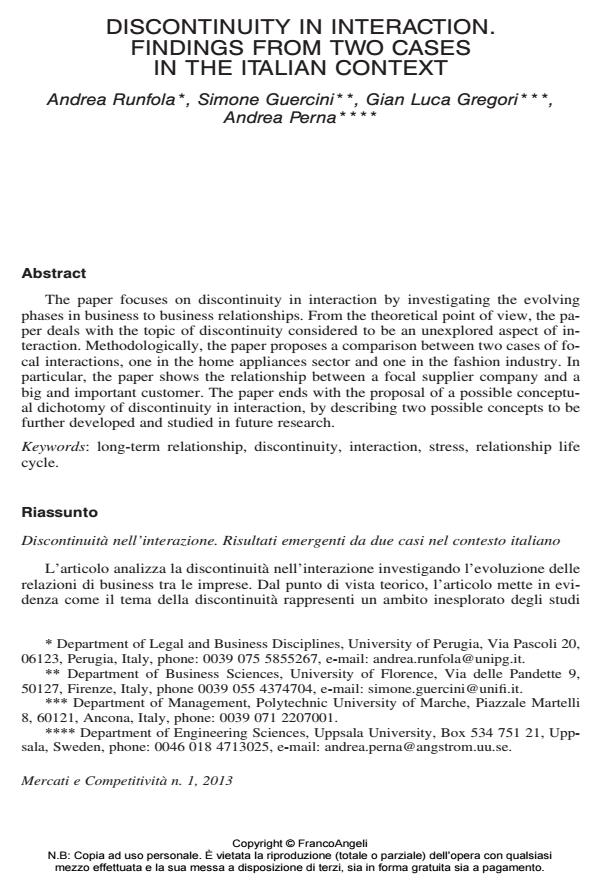Discontinuity in interaction. findings from two cases in the Italian context
Journal title MERCATI E COMPETITIVITÀ
Author/s Andrea Runfola, Simone Guercini, Gianluca Gregori, Andrea Perna
Publishing Year 2013 Issue 2013/1
Language English Pages 20 P. 53-72 File size 550 KB
DOI 10.3280/MC2013-001005
DOI is like a bar code for intellectual property: to have more infomation
click here
Below, you can see the article first page
If you want to buy this article in PDF format, you can do it, following the instructions to buy download credits

FrancoAngeli is member of Publishers International Linking Association, Inc (PILA), a not-for-profit association which run the CrossRef service enabling links to and from online scholarly content.
The paper focuses on discontinuity in interaction by investigating the evolving phases in business to business relationships. From the theoretical point of view, the paper deals with the topic of discontinuity considered to be an unexplored aspect of interaction. Methodologically, the paper proposes a comparison between two cases of focal interactions, one in the home appliances sector and one in the fashion industry. In particular, the paper shows the relationship between a focal supplier company and a big and important customer. The paper ends with the proposal of a possible conceptual dichotomy of discontinuity in interaction, by describing two possible concepts to be further developed and studied in future research.
Keywords: Long-term relationship, discontinuity, interaction, stress, relationship life cycle.
Andrea Runfola, Simone Guercini, Gianluca Gregori, Andrea Perna, Discontinuity in interaction. findings from two cases in the Italian context in "MERCATI E COMPETITIVITÀ" 1/2013, pp 53-72, DOI: 10.3280/MC2013-001005